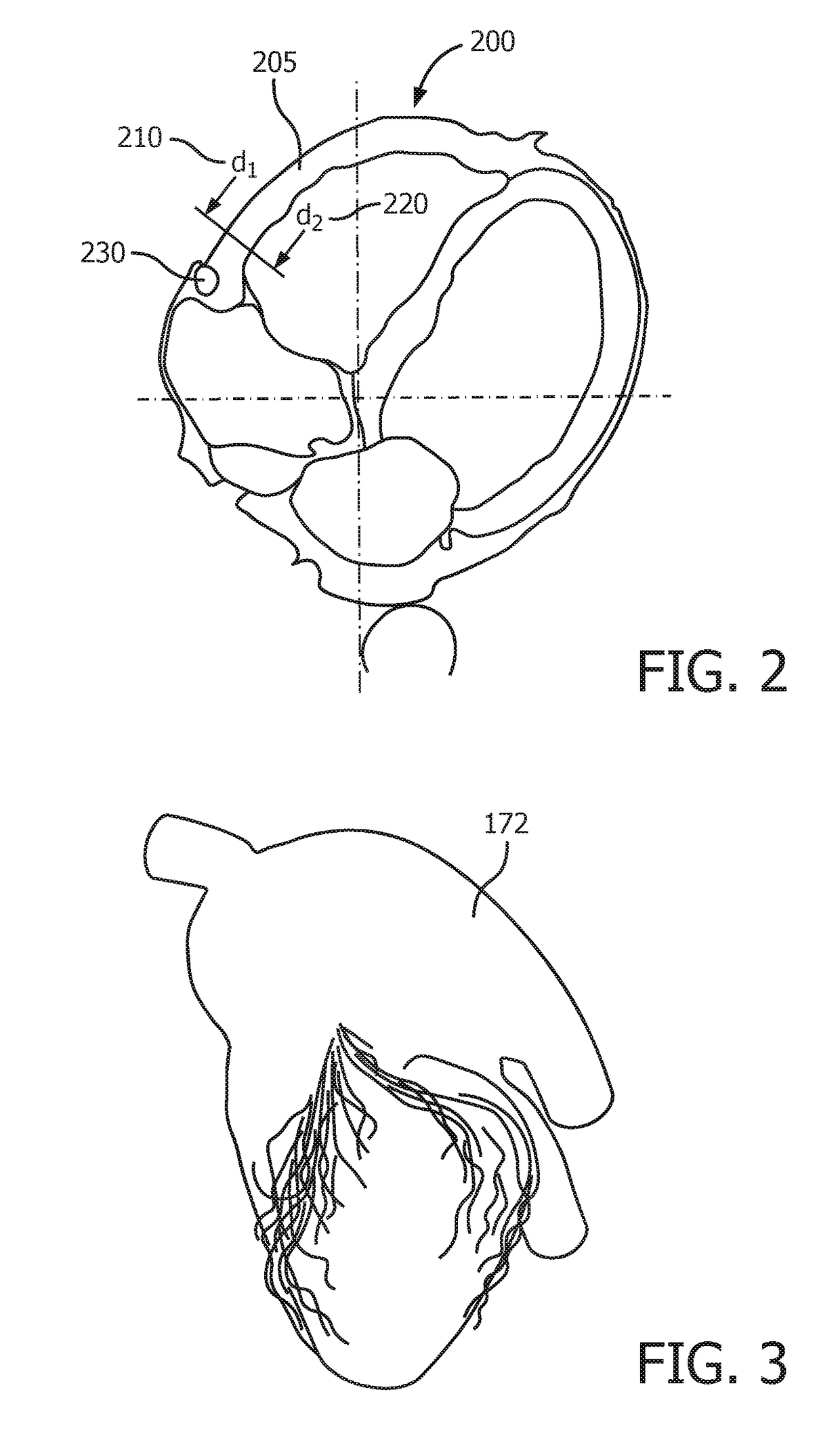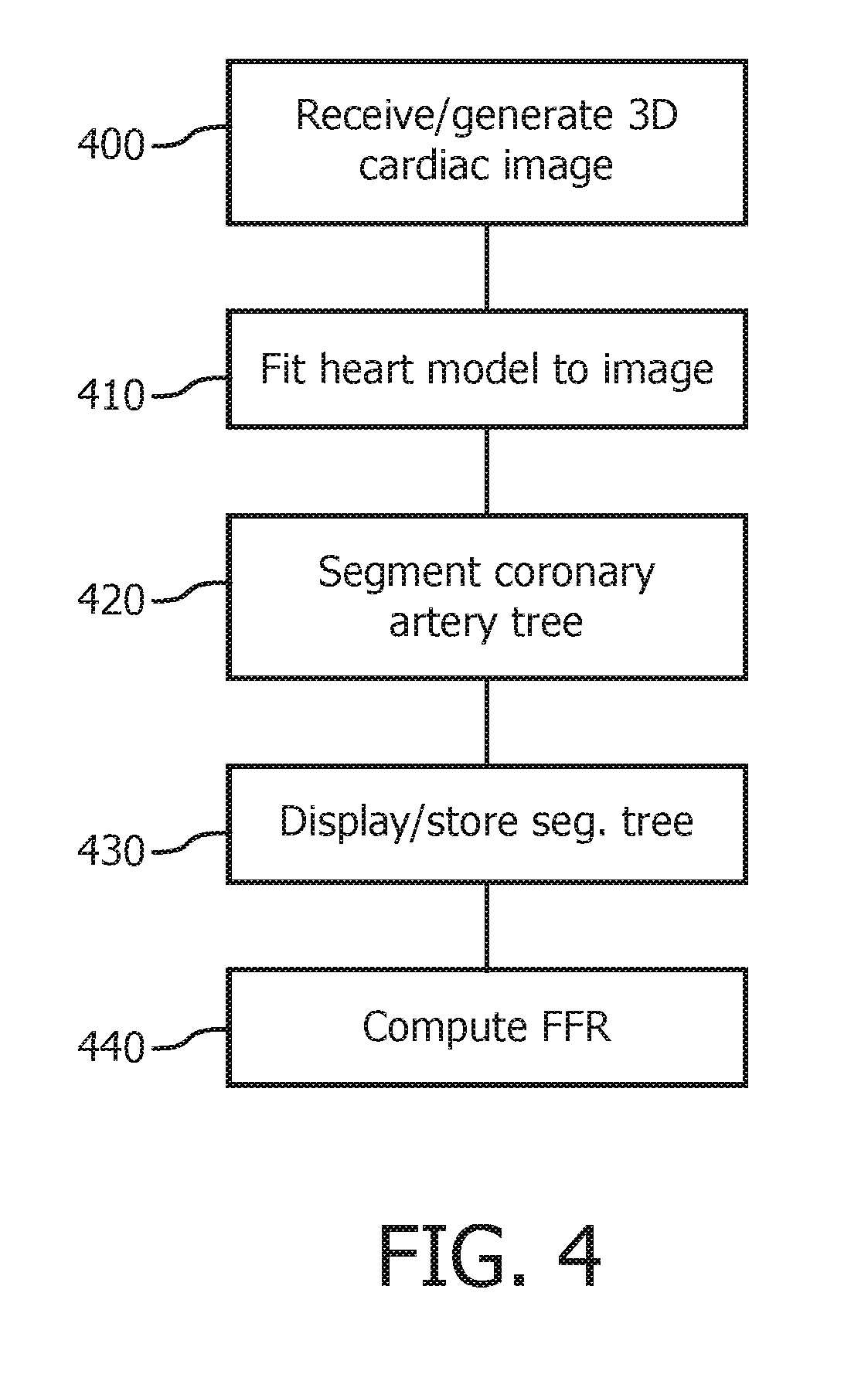Heart model guided coronary artery segmentation
a heart model and coronary artery technology, applied in the field of medical imaging, can solve the problems of coronary artery, difficult accurate representation of the coronary artery tree, and unclear delineation of vessel boundaries
- Summary
- Abstract
- Description
- Claims
- Application Information
AI Technical Summary
Benefits of technology
Problems solved by technology
Method used
Image
Examples
Embodiment Construction
[0017]Initially referring to FIG. 1, a heart model guided coronary artery segmentation system 100 is schematically illustrated. A medical imaging device 110, such as a CT scanner, a MR scanner, combinations and the like, generates a three dimensional (3D) volumetric cardiac image 120. The 3D cardiac image 120 is of sufficient spatial resolution to show the coronary artery, such as a millimeter or better. The generated image can include the use of an administered contrast agent, which contrasts the coronary artery lumen. The generated 3D cardiac image 120 can be prospectively or retrospectively gated to reduce motion artifacts. The 3D cardiac image 120 can include the heart and surrounding tissues or portions of the heart and surrounding tissues.
[0018]A heart model fit unit 130 fits an anatomical heart model 140 known in art to the heart in the 3D cardiac image. The heart model 140 is a digital spatial representation of the tissues of the heart. The heart model can include labeled an...
PUM
 Login to View More
Login to View More Abstract
Description
Claims
Application Information
 Login to View More
Login to View More - R&D
- Intellectual Property
- Life Sciences
- Materials
- Tech Scout
- Unparalleled Data Quality
- Higher Quality Content
- 60% Fewer Hallucinations
Browse by: Latest US Patents, China's latest patents, Technical Efficacy Thesaurus, Application Domain, Technology Topic, Popular Technical Reports.
© 2025 PatSnap. All rights reserved.Legal|Privacy policy|Modern Slavery Act Transparency Statement|Sitemap|About US| Contact US: help@patsnap.com



